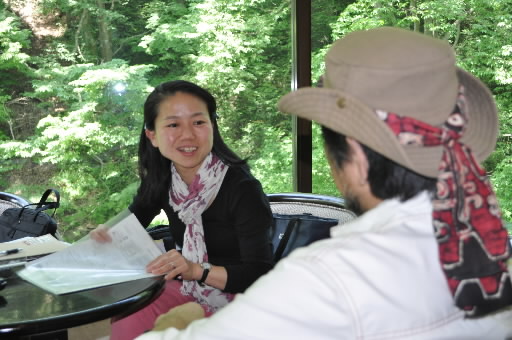Fukushima and Hiroshima: Accounts of 50 local residents, Part 2 [4]
Jun. 29, 2011
Article 4: TEPCO's tendency to conceal information
by Yo Kono and Seiji Shitakubo, Staff Writers
Disregard for local residents, distrust grows
Under fire for its handling of the nuclear accident at the Fukushima No. 1 nuclear power plant, the Tokyo Electric Power Company (TEPCO) has been criticized for its tendency to cover up unfavorable information. “This tendency to conceal information is nothing new,” said Koji Suzuki, 58, his voice raised. Before the nuclear crisis erupted, Mr. Suzuki lived in the town of Namie in Fukushima Prefecture, about 6 kilometers from the power plant, and made his living as a fisherman.
In 2006, it was revealed that TEPCO had been reporting, for as long as 19 years, that the temperature of the sea around the drainage outlet of the reactors that released warm reactor effluents was one degree lower (Celsius) than the actual temperature. In the wake of the recent accident, triggered by the earthquake and tsunami, the company discharged radiation-contaminated water into the ocean without the knowledge and consent of local fisheries cooperatives. “TEPCO thinks the ocean is a place where they can freely discharge their waste,” said Mr. Suzuki in frustration. “They think it's all right if they just pay damages to the fishermen.”
Unreported fires
The Fukushima No. 1 nuclear power plant, which began operating four decades ago, has also experienced fires in the reactor buildings. Minoru Yoshida, 63, a former worker at the plant and a resident of the town of Okuma, said that there have been minor fires on the premises, but he has never seen newspaper articles which report on these incidents.
Another resident of Okuma, Machiko Kikuchi, 59, worked as a cook for three years at one of the company's recreation facilities in the same town. She said that, several times a year during the time she worked there, parties that had been planned for the evening would be canceled suddenly. “I heard people at work say that there must have been some trouble at the nuclear power plant.”
Ayako Oga, 38, has been casting a watchful eye on the power plant for more than 20 years. Ms. Oga is also a resident of Okuma and she now stays at an evacuation shelter. “Our worst fears have been realized,” she said, adding, “It's heartbreaking that, after Hiroshima and Nagasaki, another nuclear disaster has occurred.”
In 1985, when Ms. Oga was a first-year student in junior high school, she visited Hiroshima Peace Memorial Museum in downtown Hiroshima. She was shocked to learn the serious harm that can befall the human body through exposure to radiation. Following the nuclear accident at Chernobyl that occurred the following year, she joined a citizens' group which advocates doing away with nuclear power generation. In 1989, when operations at the Fukushima No. 2 nuclear power plant were suspended after cover-ups of troubles at the facility came to light, Ms. Oga, still a high school student at the time, visited various places in the local community and explained the dangers of nuclear power plants and the harmful effects that can be wrought by radiation.
Same answer is repeated
This citizens' group has had meetings with TEPCO once a month and demanded that the company disclose its information. However, in response to every question, TEPCO has invariably replied: “We are managing the plant safely.” When Ms. Oga sees TEPCO officials on TV, making apologies for the accident, she thinks how easy it is for them to bow their heads and yet, at the same time, how they try hard to avoid disclosing any information that would be damaging to them. “It shows their dismissive attitude toward local residents,” Ms. Oga said.
Ms. Oga is now involved in monitoring the contents of radioactive substances contained in the breast milk of some 100 mothers in and around Fukushima Prefecture. “We're doing this because the central government isn't taking a thorough look at the situation,” she said. “Otherwise, there's no protection for the lives and the health of the people of Fukushima Prefecture.”
(Originally published on June 20, 2011)








